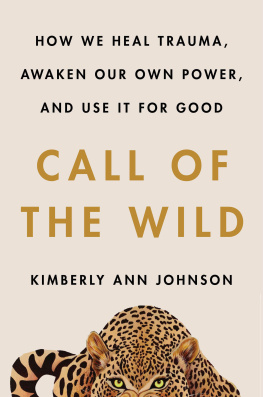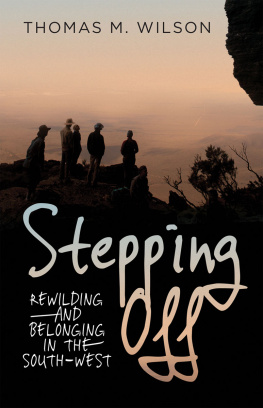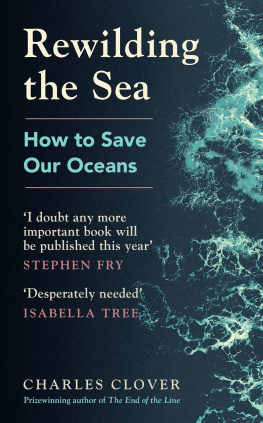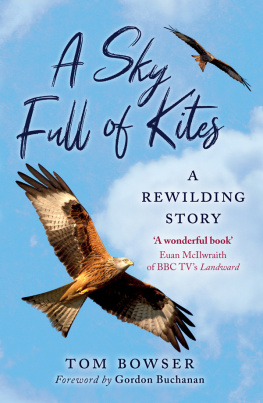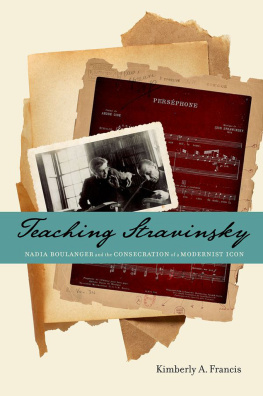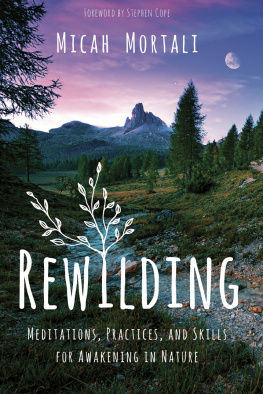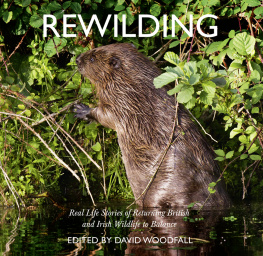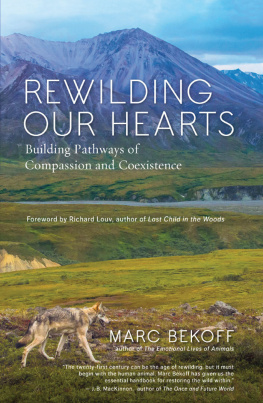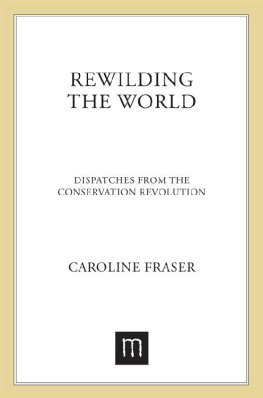Kimberly Ann Johnson - Rewilding
Here you can read online Kimberly Ann Johnson - Rewilding full text of the book (entire story) in english for free. Download pdf and epub, get meaning, cover and reviews about this ebook. year: 2021, publisher: Harper Wave, genre: Religion. Description of the work, (preface) as well as reviews are available. Best literature library LitArk.com created for fans of good reading and offers a wide selection of genres:
Romance novel
Science fiction
Adventure
Detective
Science
History
Home and family
Prose
Art
Politics
Computer
Non-fiction
Religion
Business
Children
Humor
Choose a favorite category and find really read worthwhile books. Enjoy immersion in the world of imagination, feel the emotions of the characters or learn something new for yourself, make an fascinating discovery.
- Book:Rewilding
- Author:
- Publisher:Harper Wave
- Genre:
- Year:2021
- Rating:4 / 5
- Favourites:Add to favourites
- Your mark:
- 80
- 1
- 2
- 3
- 4
- 5
Rewilding: summary, description and annotation
We offer to read an annotation, description, summary or preface (depends on what the author of the book "Rewilding" wrote himself). If you haven't found the necessary information about the book — write in the comments, we will try to find it.
Rewilding — read online for free the complete book (whole text) full work
Below is the text of the book, divided by pages. System saving the place of the last page read, allows you to conveniently read the book "Rewilding" online for free, without having to search again every time where you left off. Put a bookmark, and you can go to the page where you finished reading at any time.
Font size:
Interval:
Bookmark:
For all who dare to walk this path
On this journey, we will touch upon many different aspects of our humannessour relationship to our bodies, to our psyches, to our minds, and to our sexuality. Reading this book may bring up feelings and sensations that seem disproportionate or out of context to what you are reading. This is totally normal: learning about trauma is nonlinear and can feel challenging in surprising ways. Notice these experiences, and know that theyre an important part of the process were embarking on together. Those bodily messages are helpful information. By the end of this book, you will have more skills and practice at interpreting your bodys messages, trusting these signals, and knowing what next step to take to feel more relaxed, awake, and alive. With these newfound skills, you will be able to find new sources of power and energy when you feel exhausted or defeated. You will be able to discern intuition from fear. You will be able to stand in discomfort and become a force for good.
Respect your bodys timing of absorbing and taking in information. Pay attention to what youre noticing in your bodyyour sensations, your emotions, your images, your feelings. This is the gentlest, most sustainable way to lasting, and possibly unexpected, change. If you feel restless or upset while reading, try changing your scenery; maybe youd like to go for a walk or talk to a friend. You dont have to buckle down and grit your way through anything. In fact, please dont! Be gentle with yourself. You can always bookmark a page and return to it. This process of reading is the time to start to notice, and follow what you notice; its one of the ways you can reestablish trust with your own body and your own somatic process because youre actually listening. Youre hearing and feeling signals, and then taking an action based on those signals, which might have been something you couldnt do in the past. Now, its important to move when you want to move. Coordinating your bodys impulses with actions that respect and satisfy its needs will help you establish a new sense of safety and confidence.
You will get the most out of this experience if you take care of yourself and follow your bodys cues as your read it. Put your phone out of sight, resist habitual urges to check social media, and be deliberate about choosing to read and engage in the exercises as they come. Set yourself up for success. You will also get the most out of this book if you take care of yourself and follow your bodily needs as you read it. Check in to see what might make you even more comfortable. If youre cold, grab a blanket. If youre thirsty, go get some water or tea. If you need to go to the bathroom or eat something, please do. If youll enjoy this experience more with a highlighter or a notebook, pause to find what you need. Taking time to notice these natural impulses as you read is a part of the healing journey.
This book is meant to be read in chronological sequence. In , youll apply everything youve learned to setting healthy limits and boundaries, creating satisfying relationships, and enjoying more freedom in sex.
As you read, you will find somatic exercises and explorations woven throughout the text. Treat them like you would a recipe. Read them all the way through first, and then go back to experience them. But dont skip them! Reading this book will provoke your mind. Trying out the exercises will engage your body and make this wisdom fully yours. Earlier exercises build on later ones. While moving through this book for the first time, it wont work well to skip around, as tempting as that might be. After you finish the book, you might find that certain experiences or sections were the most useful for you; definitely put those in your tool kit, and return to themthey will be yours.
The process I offer is a subtle, sequential approach. Healing trauma isnt a one-time project, a box you check. Do your best to stay the course, which might seem to contradict my advice to go for walks. Thats what this whole process is aboutnavigating competing impulses and learning to understand and follow your genuine needs and desires, which shift in different situations and relationships.
Though I cant guarantee results for you, I can tell you that this path has worked for thousands of women, and it was the turnkey to my own healing that flipped everything. As I learned to listen, track, and allow the intelligence of my body to guide me, I came to realize that I had been swimming underwater and only occasionally peeking my head above. In the process of completing cycles and healing trauma, I noticed the reverse was truethat I was above water most of the time, less frequently submerged. I want to swim above water with you, and this is the way that I know to bring you here.
In 2014, I moved with my seven-year-old daughter from Brazil, where she was born and raised, back to my hometown of San Diego. Her new school in California was a stark contrast to the one she was familiar with in our small bohemian neighborhood in the otherwise big city of Rio de Janeiro. There she would run in, hug her teachers, and fall into a puppy pile on the floor with the other kids. Now in the US, she attended a school where touching her classmates was against the rules. When she kissed a new friend on the forearm, the girl yanked her arm away in surprise and said, Germs! Thats not allowed. To soften the adjustment, we negotiated with her teacher so she could ask for or receive an occasional hug throughout the day. After a few weeks, though, her response to what she saw and felt in this new place was, These people dont know how to love.
Apart from observing the obvious cultural differences, she was perceiving a deeper truth that has become increasingly evident since: we are a country relearning and redefining how to be together, talk to one another, feel safe, express our care, and touch one another in a way that honors our differences and respects one anothers boundaries. This stage of redefinition calls into question almost everything we know about how to relate to each other, whether thats at school, at work, on the subway, at bath time, or in our bedrooms.
The #MeToo movement started a conversation about boundaries and power that has brought these issues to the forefront. Many of us are among the hundreds of thousands of women who have shared stories of violation. For some of us that means were now reliving and living with trauma; for others it means were reconsidering myriad interactions and wondering if they were as normal as we thought they were. Many others feel outraged and disgusted, yet powerless to effect change. Weve named the problem, but beyond that most of us feel polarized and confused about how to move forward through gray areas where most of us are living, breathing, and negotiating relationships, sexuality, intimacy, and love. We have no shared language, no shared practices or plan for how to move forward.
The coronavirus pandemic further intensified our uncertainty of how to be together: what kind of touch and closeness was safe, how to read each others facial and bodily cues, and how to define our boundaries. Then, during the height of the shelter-in-place orders, the murders of George Floyd and Breonna Taylor set in motion a heightened collective reckoning with systemic racism in this country. Finally, on a national scale we were coming out of denial and beginning to have long-overdue conversations about the dehumanization of Black bodies. For many, the need to participate in public protests and take part in community activism outweighed the potential dangers of gathering in a pandemic; across the country and around the world, people took to the streets to mobilize and make their voices heard.
Font size:
Interval:
Bookmark:
Similar books «Rewilding»
Look at similar books to Rewilding. We have selected literature similar in name and meaning in the hope of providing readers with more options to find new, interesting, not yet read works.
Discussion, reviews of the book Rewilding and just readers' own opinions. Leave your comments, write what you think about the work, its meaning or the main characters. Specify what exactly you liked and what you didn't like, and why you think so.

